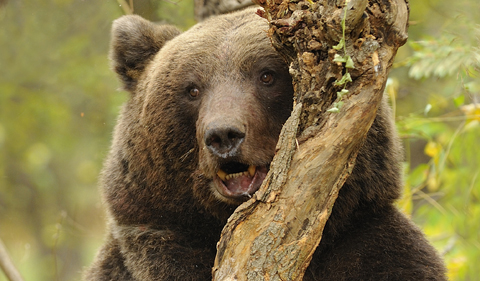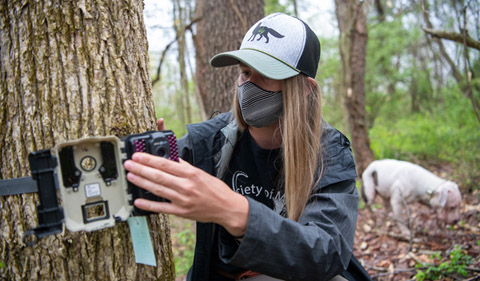
Brown bear, photo by Despinel Dragomir
Romanian wildlife management authorities determine annual hunting quotas based on ambiguous data, and these decisions might be influenced by the profitability of the hunt, according to new research from an international team of scientists including Dr. Viorel Popescu, Assistant Professor of Biological Sciences at Ohio University.
The team also includes researchers from the University of Bucharest, Simon Fraser University, the Raincoast Conservation Foundation, and the Association for Biodiversity Conservation.
The research—Assessing biological realism of wildlife population estimates in data-poor systems—looked at three large carnivores protected under European Union legislation:
- the brown bear
- the grey wolf
- the Eurasian lynx
The scientists used government data on carnivore abundances and trophy hunting in Romania and compared them with numbers from the same species around the world to assess how plausible Romania’s wildlife management might be. The study revealed substantial issues with the data used to inform management, particularly for brown bears.
The numbers used to set brown bear quotas imply that, despite heavy levels of hunting, many bear populations were growing at a very high rate, one never before seen in Europe or North America. These unrealistic numbers seemed associated with profitability of the hunt; counties with greater amounts of hunting revenue had overly optimistic population growth rates.
Optimistic Population Estimates Associated with Hunting Revenue
“The brown bear results really surprised us,” said Popescu, the lead co-author of the paper and a researcher at University of Bucharest. “The government numbers suggest that populations in certain counties have been growing at up to 50 percent a year – almost four times faster than observed anywhere else in the world.”
By contrast, the researchers found that in Eurasian lynx, a species with little economic value, official data indicated lower than expected population growth in most cases, and no association between county-level hunting and abundance estimates.
Gray wolves, a carnivore that is rebounding in Europe after decades of persecution, also with low economic value, had biologically plausible population estimates in most cases, and no county-level associations between hunt levels and official abundances.
“These findings beg the question about the extent to which hunting profitability drives wildlife management decisions,” continues Popescu. “From data collection and reporting to setting hunting quotas, our research shows that faulty data and the desire for profitability are likely to impact the long-term viability of these protected species with consequences not only for Romania, but for the European Union as a whole.”
“Our results highlight a risky approach to management by operating not only with limited data, but also on assumptions that run counter to scientific knowledge about these species,” said Kyle Artelle, a biologist with the Raincoast Conservation Foundation and co-lead author of the study. “The full consequences of this are as of yet unknown, but certainly concerning.”
These findings come as no surprise to Mihai Pop and Steluta Manolache, members of the Association for Biodiversity Conservation in Romania. Pop, who has more than 10 years of experience working with Romanian wildlife managers, notes the lack of biological realism of carnivore data is indicative of a flawed, opaque, and antiquated monitoring and reporting system.
“Currently wildlife population assessments are performed for the sole purpose of setting hunt quotas and justifying the hunt to the EU,” said Pop. “How can we reconcile conservation imperatives with this method of hunt management, when the public is literally kept in the dark about the monitoring methods and scope of large carnivore management in Romania?”
Raising Questions about European Union Conservation Strategy
This situation is not unique to Romania, with uncertainty about populations being a reality in all wildlife management, along with the influence of non-biological considerations.
“The prudent management and conservation of large terrestrial carnivores depend fundamentally on reliable evidence of their regional population status and long-term trends in numbers,” said Paul Paquet, senior scientist at Raincoast Conservation Foundation, Canada, and leading expert in carnivore conservation. “Confirmation in Romania of contrived population information is disturbing, raising serious concerns about the susceptibility of the EU’s strategy for continental conservation of carnivores to questionable management practices by some member states.”
Despite the problems highlighted in this study, there are clear ways of moving forward.
“Regulated hunting can remain a useful management and conservation tool, but our research highlights the need to improve monitoring and reporting methods and a more cautious approach that buffers against the uncertainties in Romanian carnivore population trends,” said Laurentiu Rozylowicz, a professor at University of Bucharest.



















Comments